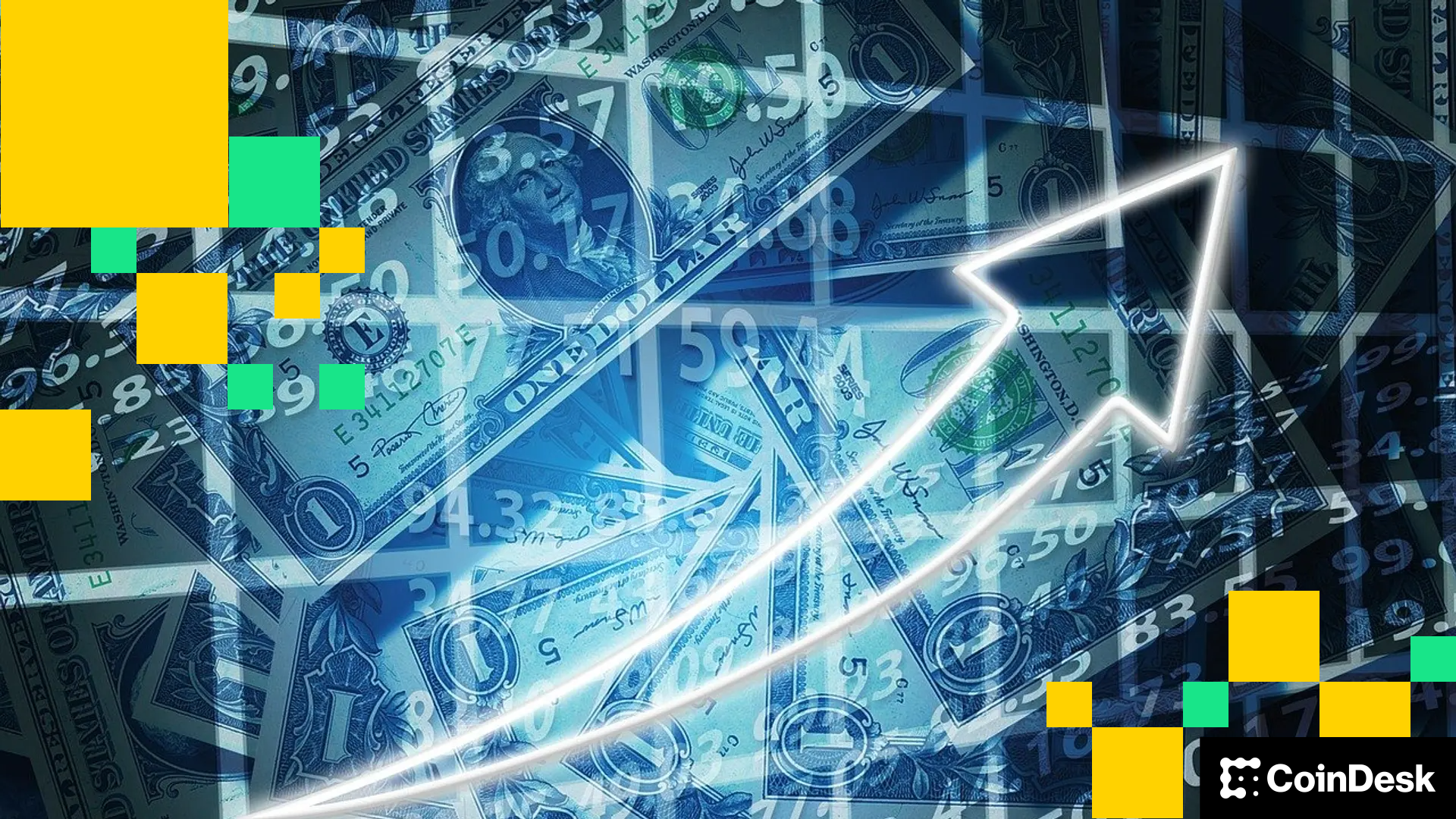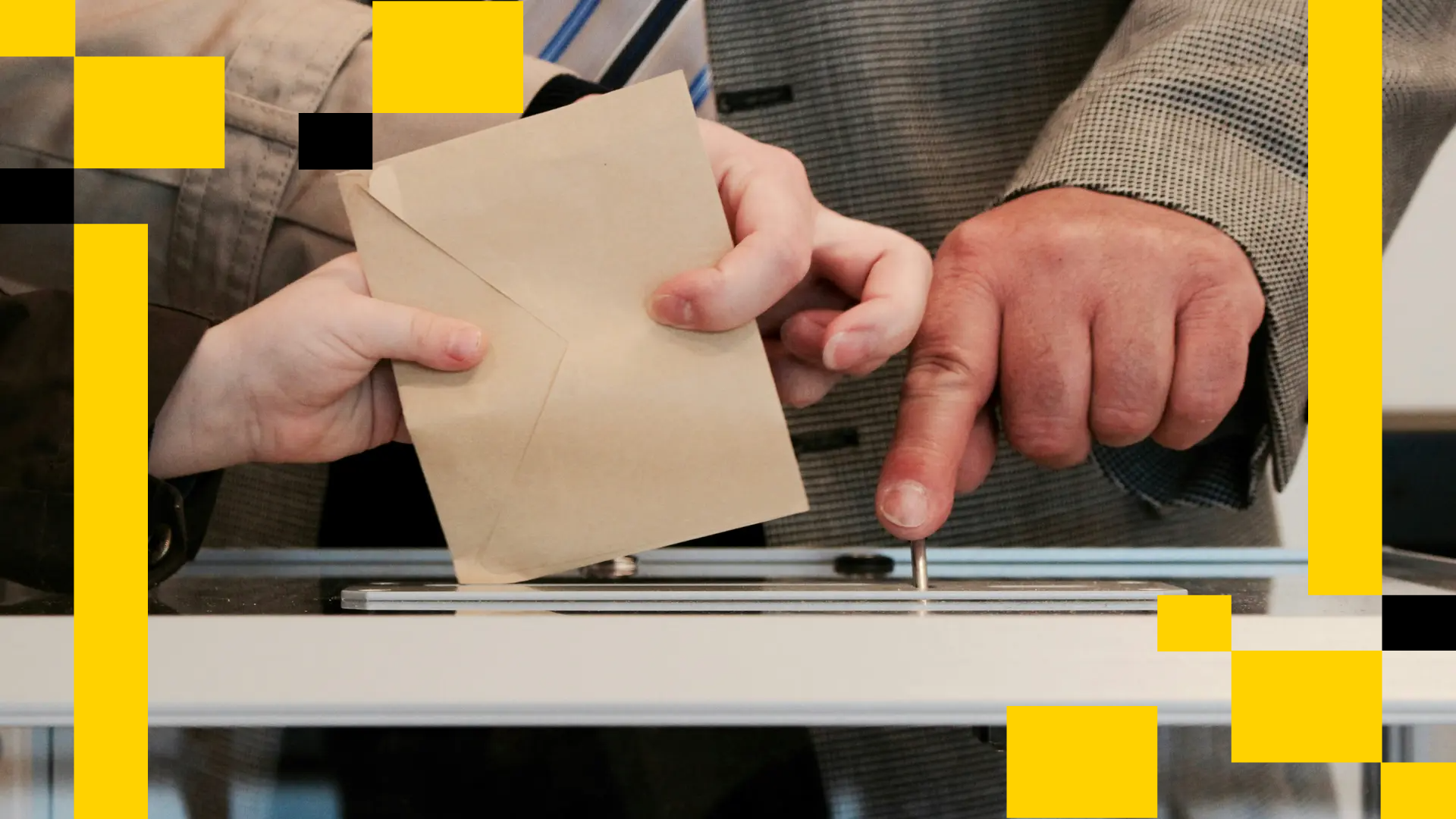Uncategorized
Ben Fielding: Decentralizing Machine Intelligence

It started with a noisy desk. The desk was a wooden cubicle in a lab at Northumbria University, in northern England, where a young AI researcher began his PhD track. This was in 2015. The researcher was Ben Fielding, who had built a large machine stuffed with early GPUs to develop AI. The machine was so loud it annoyed Fielding’s lab-mates. Fielding crammed the machine beneath the desk, but it was so big he had to awkwardly stick his legs to the side.
Fielding had some unorthodox ideas. He explored how “swarms” of AI — clusters of many different models — could talk to each other and learn from each other, which might improve the collective whole. There was just one problem: He was handcuffed by the realities of that noisy machine beneath his desk. And he knew he was outgunned. “Google was doing this research as well,” Fielding says now. “And they had thousands [of GPUs] in a data center. The things they were doing weren’t crazy. I knew the methods… I had lots of proposals, but I couldn’t run them.”
Ben Fielding, CEO of Gensyn, is a speaker at Consensus 2025 in Toronto.
Jeff Wilser is the host of The People’s AI: The Decentralized AI Podcast and will host The AI Summit at Consensus 2025.
So a decade ago, it dawned on Fielding: Compute constraints would always be an issue. In 2015, he knew that if compute was a hard constraint in academia, it would absolutely be a hard constraint when AI went mainstream.
The solution?
Decentralized AI.
Fielding co-founded Gensyn (along with Harry Grieve) in 2020, or years before Decentralized AI became fashionable. The project was initially known for building decentralized compute – and I’ve spoken with Fielding about this for CoinDesk and on panel after panel at conferences – but the vision is actually something wider: “The network for machine intelligence.” They’re building solutions up and down the tech stack.
And now, a decade after Fielding’s noisy desk annoyed his lab-mates, the early tools of Gensyn are out in the wild. Gensyn recently released its “RL Swarms” protocol (a descendant of Fielding’s PhD work) and just launched its Testnet — which brings blockchain into the fold.
In this conversation leading up to the AI Summit, at Consensus in Toronto, Fielding gives a primer on AI Swarms, explains how blockchain snaps into the puzzle, and shares why all innovators — not just tech giants — “should have the right to build machine learning technologies.”
This interview has been condensed and lightly edited for clarity.
Congrats on the testnet launch. What’s the gist of what it is?
Ben Fielding: It’s the addition of the first MVP features of blockchain integration with what we’ve launched so far.
What were those original features, pre-blockchain?
So we launched RL [Reinforcement Learning] Swarm a few weeks ago, which is reinforcement learning, post-training, as a peer-to-peer network.
Here’s the easiest way to think about it. When a pre-trained model goes through reasoning training – like DeepSeek-R1 – it learns to critique its own thinking and recursively improve against the task. It can then improve its own answer.
We take that process one step further and say, “It’s great for models to critique their own thinking and recursively improve. What if they can talk to other models and critique each other’s thinking?” If you get many models together in a group that can all talk to each other, they can start learning how to send information to the other models… with the overall goal of improving the entire swarm itself.
Gotcha, which explains the name “Swarm.”
Right. It’s this training method which allows many models to kind of combine, in parallel, to improve the outcome of a final meta-model that you could create from those models. But at the same time, you have every single individual model just improving on its own. So if you were to come along with a model on a MacBook, join a swarm for an hour and then drop back out again, you would have an improved local model based on the knowledge in the swarm, and you would have also improved the other models in the swarm. It’s this collaborative training process that any model can join and any model can do. So that’s what RL Swarm is.
Okay, so that’s what you released a few weeks ago. Now where does blockchain come in?
So the blockchain is us moving forward some of the lower-level primitives into the system.
Let’s just pretend that someone doesn’t understand the phrase “lower-level primitives.” What do you mean by that?
Yeah, so I mean, very close to the resource itself. So if you think about the software stack, you’ve got a GPU stack in a data center. You’ve got drivers on top of the GPU. You’ve got operating systems, virtual machines. You’ve got all this stuff going up.
So a lower-level primitive is the closest to the bottom foundation in the tech stack. Am I getting that right?
Yes, exactly. And the RL Swarm is a demonstration of what’s possible, basically. It’s just a somewhat hacky demo of doing really interesting large-scale, scalable machine learning. But what Gensyn’s been doing for the past four-plus years, realistically, is building infrastructure. And so we’re in this period now where the infrastructure is all at that v0.1 sort of beta level. It’s all done. It’s ready to go. We have to figure out how to show the world what’s possible when it’s quite a big shift to the way people think of machine learning.
It sounds like you guys are doing a lot more than decentralized compute, or even infrastructure?
We have three main components that sit underneath our infrastructure. Execution – we have consistent execution libraries. We have our own compiler. We have reproducible libraries for any hardware target.
The second piece is communication. So assume you can just run a model on any device in the world that’s compatible, can you get them to talk to each other? If everybody opts into the same standard, everybody can communicate like TCP/IP from the internet, basically. So we build those libraries and RL Swarm is an example of that communication.
And then, finally, verification.
Ah, and I’m guessing this is where blockchain comes in…
Imagine a scenario where every device in the world is executing consistently. They could link models together. But can they trust each other? If I connected my MacBook to yours, yes, they could execute the same tasks. Yes, they could send tensors back and forth, but do they know that what they send to the other device is actually happening on the other device or not?
In the current world, you and I would probably sign a contract to say, yes, we agree that we’ll make sure our devices do the right thing. In the machine world, it needs to happen programmatically. So that’s the final piece we build, cryptographic proofs, probabilistic proofs, game theoretic proofs to make that process entirely programmatic.
So that’s where the blockchain comes in. It gives us all of the benefits of blockchain you can imagine, like persistent identity, payments, consensus, etc. And so what we’re doing with the testnet now is taking RL Swarm and the primitives of the other infrastructure and we’re adding in the blockchain components and saying, ‘Hey, when you join a swarm now, you have a persistent identity, which exists out there on a decentralized ledger.’
In the future you’ll have the ability to make payments, but right now, you have that trust consensus mechanism where we can terminate disputes. So, it’s kind of an MVP of the future Gensyn infrastructure, where we’re going to add in components as we go.
Give us a tease of what’s coming down the pipeline?
When we reach main-net, all of the software and infrastructure is live against blockchain as the source of trust, payments, consensus, etc., identity. This is the first step of that. It’s adding identity in and saying when you join a swarm, you can register as the same person. Everyone knows who you are without having to check some centralized server or website somewhere.
Now let’s get wild and talk further in the future. What does this look like one year from now, two years from now, five years from now? What’s your North Star?
Sure. The ultimate vision is to take all of the resources that sit under machine learning and make them instantaneously programmatically accessible to everyone. Machine learning is heavily constrained by its core resources. This creates this huge moat for centralized AI companies, but it doesn’t need to exist. It can be open-sourced if we can build the right software. So our view is Gensyn builds all of the low-level infrastructure to allow that to get as close to open-source as it possibly can. People should have the right to build machine learning technologies.
Uncategorized
What’s Next for Bitcoin and Ether as Downside Fears Ease Ahead of Fed Rate Cut?

Fears of a downside for bitcoin (BTC) and ether (ETH) have eased substantially, according to the latest options market data. However, the pace of the next upward move in these cryptocurrencies will largely hinge on the magnitude of the anticipated Fed rate cut scheduled for Sept. 17.
BTC’s seven-day call/put skew, which measures how implied volatility is distributed across calls versus puts expiring in a week, has recovered to nearly zero from the bearish 4% a week ago, according to data source Amberdata.
The 30- and 60-day option skews, though still slightly negative, have rebounded from last week’s lows, signaling a notable easing of downside fears. Ether’s options skew is exhibiting a similar pattern at the time of writing.
The skew shows the market’s directional bias, or the extent to which traders are more concerned about prices rising or falling. A positive skew suggests a bias towards calls or bullish option plays, while a negative reading indicates relatively higher demand for put options or downside protection.
The reset in options comes as bitcoin and ether prices see a renewed upswing in the lead-up to Wednesday’s Fed rate decision, where the central bank is widely expected to cut rates and lay the groundwork for additional easing over the coming months. BTC has gained over 4% to over $116,000 in seven days, with ether rising nearly 8% to $4,650, according to CoinDesk data.
What happens next largely depends on the size of the impending Fed rate cut. According to CME’s Fed funds futures, traders have priced in over 90% probability that the central bank will cut rates by 25 basis points (bps) to 4%-4.25%. But there is also a slight possibility of a jumbo 50 bps move.
BTC could go berserk in case the Fed delivers the surprise 50 bps move.
«A surprise 50 bps rate cut would be a massive +gamma BUY signal for ETH, SOL and BTC,» Greg Magadini, director of derivatives at Amberdata, said in an email. «Gold will go absolutely nuts as well.»
Note that the Deribit-listed SOL options already exhibit a strong bullish sentiment, with calls trading at 4-5 volatility premium to puts.
Magadini explained that if the decision comes in line with expectations for a 25 bps cut, then a continued calm «grind higher» for BTC looks likely. ETH, meanwhile, may take another week or so to retest all-time highs and convincingly trade above $5,000, he added.
Uncategorized
Asia Morning Briefing: Native Markets Wins Right to Issue USDH After Validator Vote

Good Morning, Asia. Here’s what’s making news in the markets:
Welcome to Asia Morning Briefing, a daily summary of top stories during U.S. hours and an overview of market moves and analysis. For a detailed overview of U.S. markets, see CoinDesk’s Crypto Daybook Americas.
Hyperliquid’s validator community has chosen Native Markets to issue USDH, ending a weeklong contest that drew proposals from Paxos, Frax, Sky (ex-MakerDAO), Agora, and others.
Native Markets, co-founded by former Uniswap Labs president MC Lader, researcher Anish Agnihotri, and early Hyperliquid backer Max Fiege, said it will begin rolling out USDH “within days,” according to a post by Fiege on X.
According to onchain trackers, Native Markets’ proposal took approximately 70% of validators’ votes, while Paxos took 20%, and Ethena came in at 3.2%.
The staged launch starts with capped mints and redemptions, followed by a USDH/USDC spot pair before caps are lifted.
USDH is designed to challenge Circle’s USDC, which currently dominates Hyperliquid with nearly $6 billion in deposits, or about 7.5% of its supply. USDC and other stablecoins will remain supported if they meet liquidity and HYPE staking requirements.
Most rival bidders had promised to channel stablecoin yields back to the ecosystem with Paxos via HYPE buybacks, Frax through direct user yield, and Sky with a 4.85% savings rate plus a $25 million “Genesis Star” project.
Native Markets’ pitch instead stressed credibility, trading experience, and validator alignment.
Market Movement
BTC: BTC has recently reclaimed the $115,000 level, helped by inflows into ETFs, easing U.S. inflation data, and growing expectations for interest rate cuts. Also, technical momentum is picking up, though resistance sits around $116,000, according to CoinDesk’s market insights bot.
ETH: ETH is trading above $4600. The price is being buoyed by strong ETF inflows.
Gold: Gold continues to trade near record highs as traders eye dollar weakness on expected Fed rate cuts.
Elsewhere in Crypto:
Uncategorized
BitMEX Co-Founder Arthur Hayes Sees Money Printing Extending Crypto Cycle Well Into 2026

Arthur Hayes believes the current crypto bull market has further to run, supported by global monetary trends he sees as only in their early stages.
Speaking in a recent interview with Kyle Chassé, a longtime bitcoin and Web3 entrepreneur, the BitMEX co-founder and current Maelstrom CIO argued that governments around the world are far from finished with aggressive monetary expansion.
He pointed to U.S. politics in particular, saying that President Donald Trump’s second term has not yet fully unleashed the spending programs that could arrive from mid-2026 onward. Hayes suggested that if expectations for money printing become extreme, he may consider taking partial profits, but for now he sees investors underestimating the scale of liquidity that could flow into equities and crypto.
Hayes tied his outlook to broader geopolitical shifts, including what he described as the erosion of a unipolar world order. In his view, such periods of instability tend to push policymakers toward fiscal stimulus and central bank easing as tools to keep citizens and markets calm.
He also raised the possibility of strains within Europe — even hinting that a French default could destabilize the euro — as another factor likely to accelerate global printing presses. While he acknowledged these policies eventually risk ending badly, he argued that the blow-off top of the cycle is still ahead.
Turning to bitcoin, Hayes pushed back on concerns that the asset has stalled after reaching a record $124,000 in mid-August.
He contrasted its performance with other asset classes, noting that while U.S. stocks are higher in dollar terms, they have not fully recovered relative to gold since the 2008 financial crisis. Hayes pointed out that real estate also lags when measured against gold, and only a handful of U.S. technology giants have consistently outperformed.
When measured against bitcoin, however, he believes all traditional benchmarks appear weak.
Hayes’ message was that bitcoin’s dominance becomes even clearer once assets are viewed through the lens of currency debasement.
For those frustrated that bitcoin is not posting fresh highs every week, Hayes suggested that expectations are misplaced.
In his telling, investors from the traditional world and those in crypto actually share the same premise: governments and central banks will print money whenever growth falters. Hayes says traditional finance tends to express this view by buying bonds on leverage, while crypto investors hold bitcoin as the “faster horse.”
His conclusion is that patience is essential. Hayes argued that the real edge of holding bitcoin comes from years of compounding outperformance rather than short-term speculation.
Coupled with what he sees as an inevitable wave of money creation through the rest of the decade, he believes the present crypto cycle could stretch well into 2026, far from exhausted.
-

 Business11 месяцев ago
Business11 месяцев ago3 Ways to make your business presentation more relatable
-

 Fashion11 месяцев ago
Fashion11 месяцев agoAccording to Dior Couture, this taboo fashion accessory is back
-

 Entertainment11 месяцев ago
Entertainment11 месяцев ago10 Artists who retired from music and made a comeback
-

 Entertainment11 месяцев ago
Entertainment11 месяцев ago\’Better Call Saul\’ has been renewed for a fourth season
-

 Entertainment11 месяцев ago
Entertainment11 месяцев agoNew Season 8 Walking Dead trailer flashes forward in time
-

 Business11 месяцев ago
Business11 месяцев ago15 Habits that could be hurting your business relationships
-

 Entertainment11 месяцев ago
Entertainment11 месяцев agoMeet Superman\’s grandfather in new trailer for Krypton
-

 Entertainment11 месяцев ago
Entertainment11 месяцев agoDisney\’s live-action Aladdin finally finds its stars





